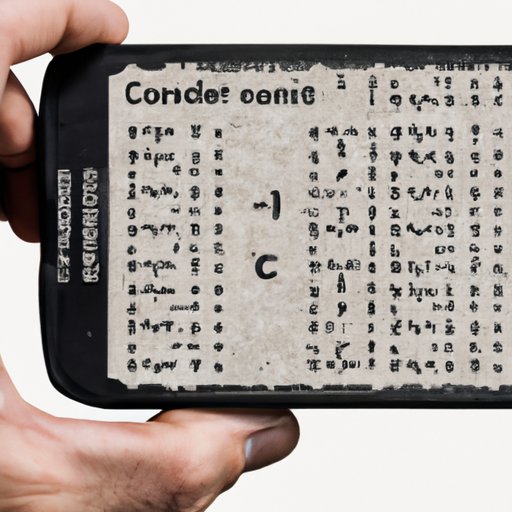
I. Introduction
Concrete is a crucial building material that is used in various construction projects worldwide. It is a versatile material that can be used for different purposes, including flooring, walls, and foundations. Consequently, having a good understanding of concrete calculation is essential for both professionals and DIY enthusiasts. In this article, we will explore how to calculate concrete with precision.
II. A Step-by-Step Guide to Calculating Concrete
The process of calculating concrete is fairly straightforward. It involves determining the dimensional measurements of the area that needs to be covered, converting those measurements to the desired units, and then using those figures to calculate the amount of concrete required. Here is a step-by-step guide to calculating concrete:
1. Determine the dimensions of the area: Take measurements of the length, width, and depth of the area that needs to be covered with concrete. Keep in mind that the depth may vary depending on the purpose of the project.
2. Convert measurements: Convert all the measurements to the same unit. This can be done using a measurement conversion calculator, or you can convert them manually yourself.
3. Calculate volume: Calculate the volume of the area by multiplying the length by the width by the depth.
4. Convert volume to cubic yards: Convert the volume to cubic yards by dividing it by 27. This will give you the amount of concrete needed in cubic yards.
5. Add extra concrete: Take into consideration any waste, spillage, or project overrun. Adding an extra 5-10% of concrete to the total amount will compensate for this.
III. Factors Affecting Concrete Calculations
Several factors affect the calculation of concrete. The thickness, width, and length of the area are the most significant factors. The type of soil and the quality of the concrete mix may also influence concrete calculations. However, one formula can be used to derive the quantity of concrete required based on these dimensions and the area’s total surface.
The formula is:
Volume of concrete = Length x Width x Depth
IV. Understanding the Different Types of Concrete
Different types of concrete are available, and they require different amounts of materials. The type, size, and shape of the area to be covered can affect the amount of concrete required. Choosing the right type of concrete is crucial based on the specific project requirements.
An essential factor in selecting a particular mix is the required strength, which is measured in pounds per square inch (psi). Various concrete mixes have different psi, making them more or less resilient to different loads.
V. Concrete Calculation Mistakes to Avoid
Common mistakes people make when calculating concrete include failing to take into account any waste, inaccurate measurements, and failing to account for aspects such as formwork. Here are some tips for avoiding these mistakes:
1. Make precise measurements: Ensure all measurements are precise and accurate.
2. Account for additional materials: Always account for extra materials needed and project overrun.
3. Use proper formwork: Proper formwork ensures accurate measurement and proper application.
VI. How Technology Is Changing Concrete Calculation
In recent years, advanced technology has been developed to revolutionize concrete measurement. Various technological advancements have made it easier and more efficient to measure concrete. For example, lasers can be used to measure precise distances, and drones can capture aerial images. These technological advancements have made the process less time-consuming and more accurate.
VII. Creative Concrete Design Calculation
Designing concrete measurements presents an opportunity to get imaginative with the process. Innovative approaches include using 3-dimensional design tools to visualize concrete calculations. This can help visualize potential issues before the pouring process begins, giving an opportunity to develop corrective measures.
VIII. Future Innovations in Concrete Calculation
Emerging technologies are set to enhance concrete measurement even further. Innovations in Artificial intelligence (AI) and the internet of things (IoT) may lead to more sophisticated tools that enhance the accuracy of concrete measurement.
IX. Conclusion
Calculating concrete accurately is vital when planning a construction project. Understanding the factors that influence the calculation and choosing the right type of concrete can save you time and money. By following the guidelines outlined in this article, you can improve your concrete calculation accuracy and ensure that your project is a success.




